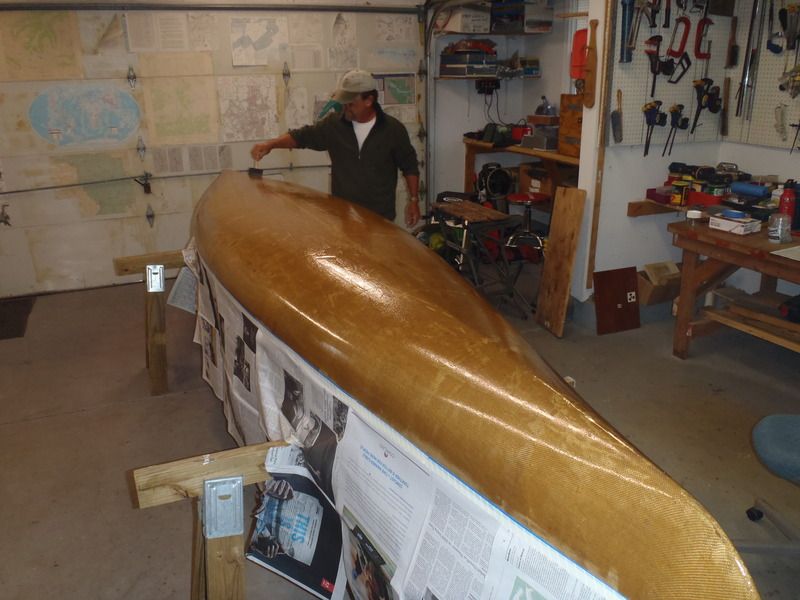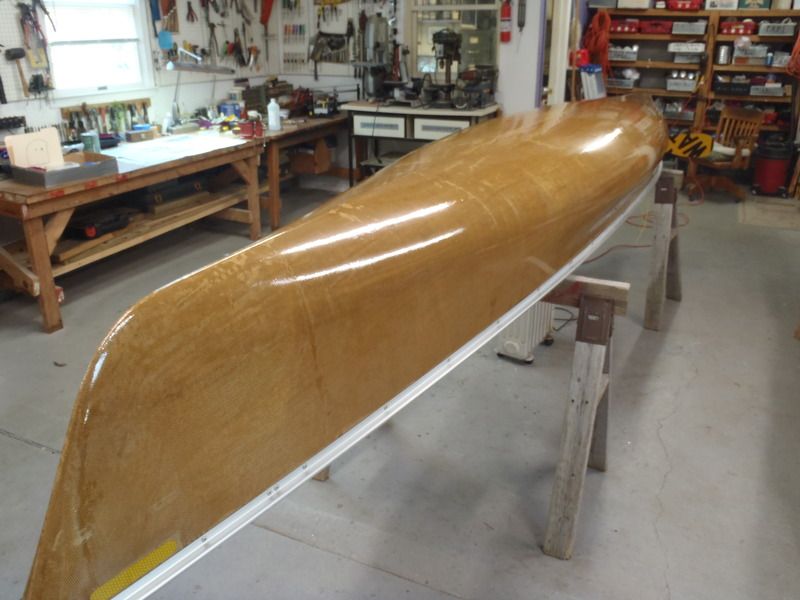I've got a Wenonah ultra-light layup canoe that has seen some action on the hull's bottom, despite my best efforts to dodge the burrs of the riverbed.
After last October's trips the canoe's bottom was pretty scratched up, some revealing the fabric layer. Last fall I mixed up some Gflex, and using a very small brush filled in the scratches. Covered with Peel Ply, let dry and sanded out rough edges. Not pretty, but it is protected.
3 weeks of paddling in Florida have now added to my hull maintenance tasks. The worst new scratch was one I saw coming in the crystal clear water, but too late to avoid. An upside down in the water metal tubular framed chair, with one of its legs projecting skyward, of course missing its rubber foot cover. Any ride over that piece of re-bar was too long.
Facing another hull touch up. I'm left with some thoughts on next steps.
1. How about using polyurethane for patching? Its inexpensive and already mixed. If I used polyurethane and didn't like the results, could I Gflex over the polyurethane?
2. Long term, my use pattern suggests I'm in for more of this. Does it make sense to roll the entire bottom with Gflex now. The alternative is to keep patching individual scars until over time it has an epoxy bottom.
Tales from the experienced would be nice to read.
After last October's trips the canoe's bottom was pretty scratched up, some revealing the fabric layer. Last fall I mixed up some Gflex, and using a very small brush filled in the scratches. Covered with Peel Ply, let dry and sanded out rough edges. Not pretty, but it is protected.
3 weeks of paddling in Florida have now added to my hull maintenance tasks. The worst new scratch was one I saw coming in the crystal clear water, but too late to avoid. An upside down in the water metal tubular framed chair, with one of its legs projecting skyward, of course missing its rubber foot cover. Any ride over that piece of re-bar was too long.
Facing another hull touch up. I'm left with some thoughts on next steps.
1. How about using polyurethane for patching? Its inexpensive and already mixed. If I used polyurethane and didn't like the results, could I Gflex over the polyurethane?
2. Long term, my use pattern suggests I'm in for more of this. Does it make sense to roll the entire bottom with Gflex now. The alternative is to keep patching individual scars until over time it has an epoxy bottom.
Tales from the experienced would be nice to read.


